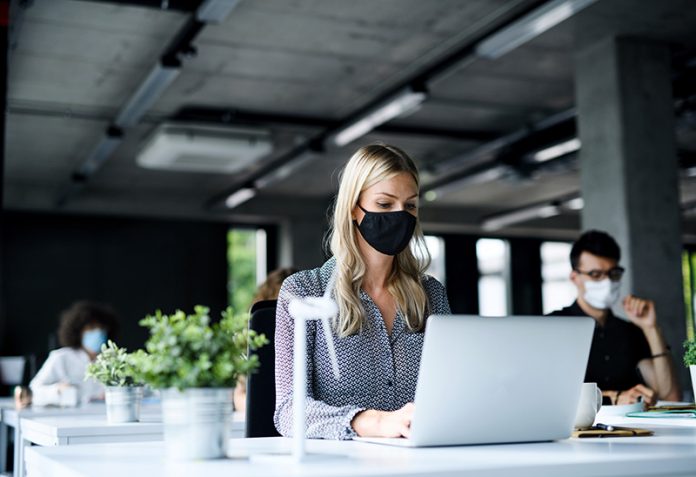There’s no denying it— the pandemic has changed the way we live and work. After months of working in the comfort of their own home, many employees are now returning to offices as more establishments have been allowed to open up again.
Unfortunately, returning to work can be pretty challenging for a lot of people. The same can be said when it comes to getting used to office routines again after accomplishing your work-related tasks at home for more than a year.
In order to ease the transition, employers and human resources (HR) teams will need to make specific changes to the physical workplace, policies, and their approach to employee relations. Here are tips in ensuring a better work experience when it’s time for employees to return post-pandemic:
1. Sanitise And Organise The Office
When having your employees report to the office after or even during the pandemic, safety and health should be your priority. So the first tip to follow is to ensure that your office space is safe and sanitised for employees to work and spend time in.
Consider hiring a professional cleaning service in order to deep clean the entire office, making it sparkling clean and completely safe for your employees’ return. Also, you want to increase the standards of cleaning in the workplace. Carry out daily disinfection for workstations once everyone has gone home, and have cleaning professionals tidy up common areas several times a day.
You also want to educate your employees on the importance of a clean and sanitised workplace. Require them to have their own alcohol sprays and to keep their workspace neat.

Furthermore, it would be best if you also considered changing the layout of your office in order to give each employee more space and create more distance between them. Rearranging workstations can help reduce the spread of germs. If your office lacks space, convert your meeting rooms into offices. These temporary changes can work wonders in putting your employees’ minds at ease.
2. Support Mental Health Wellness
Quarantines and self-isolation during the pandemic have affected people’s mental health. Your HR team should be aware of their potential effects and prepare the appropriate resources to help your employees.
You need to educate team managers and HR teams about the mental health impact of self-isolation and quarantine and monitor employees closely during the transition. Adjusting to regular office work can be extra difficult for some individuals. Thus, it’s essential that you know how to spot an employee who’s struggling.
You should also gather various mental health resources. These can be everything from information about local treatment centres and mental health hotlines to professional psychiatrists and therapists covered by their benefits. Then, share these via a company-wide email. Also, you can set up a mental health support group for employees, allowing them to share their stories and feelings.
In addition, you need to include mental health wellness leave in your paid day off policies. You can add mental health sick days or designate a specific number of days off for mental wellness.
3. Update Procedures And Policies
Speaking of policies, the pandemic has forever changed how numerous businesses operate internally. This means you need to take a closer look at your current procedures and policies and update them to today’s best practices.
Apart from the previously mentioned mental health wellness leave, you should provide extra days off if an employee has tested positive for COVID-19. Also, look into offering leaves to employees who need to care for or live with an infected person.
It may be advisable to make policy changes regarding remote work for employees who can do it as well as more flexible paid time off and attendance. Afterward, consider several ways to measure effectiveness when it comes to your new policies and procedures in order to determine whether you should continue following them or not.
Policies on meetings and events should change as well. Having too many people in a single room doesn’t comply with social distancing and can make some employees uncomfortable and uneasy. You can ask employees to keep meeting rooms only at half capacity and hold larger events via video conferences or in more spacious locations.
4. Start Recognition Programs
Recognition helps motivate employees and boosts their engagement after working from home for a long period. By appreciating their efforts during the pandemic, you can reinforce the behaviour and encourage them to perform better. Starting a recognition program will allow you to create a positive emotional bond with them and heighten their self-esteem and confidence.
Consider giving out awards or rewards on the basis of performance during the remote work period in order to motivate employees to fare well during the in-office transition. These can be in the form of online vouchers, gift bags, and bonuses, among others. Be it through a simple message or a formal event, recognition can serve its purpose to inspire employees to continue working hard.
5. Ensure Team Autonomy
Welcoming your employees back with confidence ensures that you’re moving forward in the right direction. You can do so by granting them complete autonomy and trusting them to make decisions.
Not only is this a great way to assess their leadership qualities, but it may also increase your team’s performance and gain their trust as well.
6. Hold Interactive Events
After working alone for a considerable amount of time, your employees need to rekindle the bond with their team. Interactive activities, festivities, and celebrations are excellent ways to break the ice and foster personal and informal interaction.
You can also give them some food for the mind by arranging workshops and seminars so they catch up on new skills and information that can help them have a fresher and innovative approach towards work. Events like soft skill workshops, networking events, wellness seminars, and team-building sessions will allow employees to learn new things, perform better, experience a boost in their morale, and have the chance to bond and have fun with their teammates.
Conclusion
With employees returning to a traditional work setup after months of doing their jobs at home, it’s in the best interest of your business to make them feel comfortable about the whole situation. By following the above tips, you’re sure to create a warm and appreciative welcome for your employees once they’re back in the office.


































